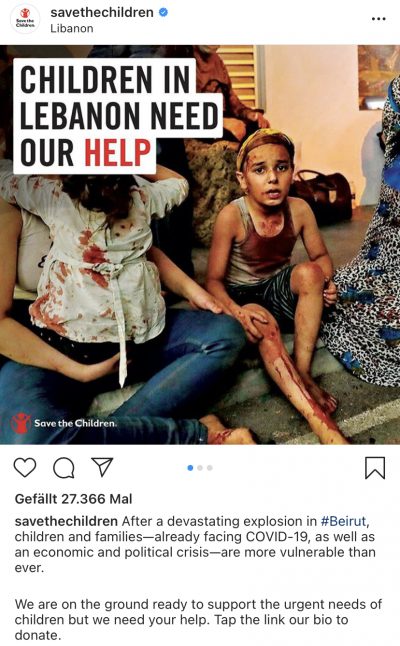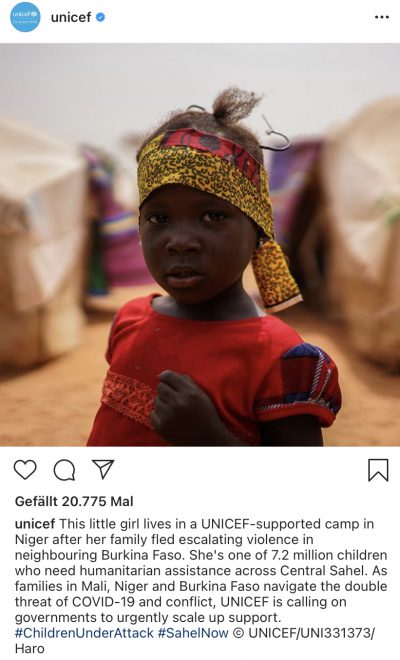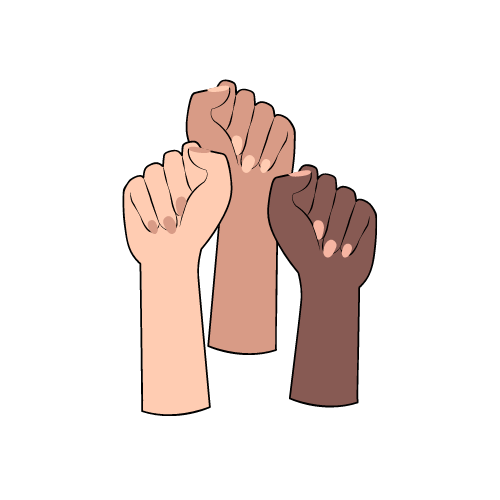For development organizations, it is difficult to attract an (online) audience that is involved and lasts. Visual media can help attracting such an audience. Visualizing a cause is a great way to reach more engagement. Images receive more attention from viewers, are better understood and give credibility to a message. Especially Instagram and Facebook are great mediums to use in order to create a more visual online identity. Development organizations often use photos of people to gain attention. In earlier days, photos of people in distress that we now call unethical were often used, for example, children in Africa with flies in their eyes. Development organizations now have photography policies in order to ensure that the photos they use are used in an ethical manner. I am however wondering whether the ways in which photos are used nowadays have really improved. Development organizations still use photos of children to make the audience feel pity, which leads to more engagement. How is this ethical? And what kind of North – South dichotomy does this generate?
UNICEF, for example, says that they are using photos to advocate for children and defend children’s rights: “The accurate and respectful visual representation of children everywhere is part of defending children’s rights, including their rights to expression, privacy and protection” (UNICEF, n.d.). It is true that development organizations have long moved away from the ‘starving African child’ imagery, but they still use images of (suffering) children. Save the Children, an NGO promoting policy changes to enhance the rights for young people, is a development organization that actively uses photos of children on their social media. On the photo below, we can see a young boy bleeding after the explosion in Beirut in August 2020. The caption reads that many children and families “are more vulnerable than ever” and then continues into a call to action to donate, because they need help to support the children in need. Pictures with captions like these are problematic because they spectacularize the suffering, leading to a politics of pity. The politics of pity firstly relies on two distinctions: first of all, the distinction between those we suffer and those who don’t. Secondly, the unlucky (the sufferer) vs. the lucky (the non-sufferer), and often the lucky ones are Westerners. “Pity, here, is not the natural sentiment of human empathy but, rather, an historically specific and politically constituted principle for relating spectator and sufferer, with the former safely removed from the unfortunate condition of the latter”. (Chouliaraki, 2004, p. 190)

Next to that, posts like these also reinforce the idea of the giver and the receiver, the idea that the Global North has to save the Global South. Save the Children did not only post a picture of a suffering child, they also framed the picture to create a sense of pity and used this pity to make the audience donate. Although I do understand that using such a photo leads to more donations and attention, it is in my eyes not the right way to do so. This framing, however, does not only happen with photos where a child is visibly in need. UNICEF posted a photo of a little girl on Instagram (see below). When looking at the photo, the audience cannot identify that the girl is suffering like the boy in the picture above. The caption, however, reads that she is in a refugee camp and is in need of humanitarian assistance. This also creates a feeling of pity. Using pictures and captions like these sustain this relation between the rich and the poor, the safe and the endangered, the sufferer and the non-sufferer, the Global South and the Global North, and also reduce these people and children to nothing more than their ‘suffering status’.

Although I do understand that development organizations need ways to share their message, gain attention and receive donor support, I do not agree with the ways in which they attempt to reach this. The photos that generate pity do indeed create short-term awareness and lead to donations. However, they do not lead to a sustainable and long-term engagement. Instead of dehumanizing the Global South, we should start looking for ways in which development organizations have long-term online engagement and support, and at the same time dignify the marginalized. We should move from generating feelings of pity, to generating feelings of empathy and treat those who are portrayed as equals who have agency and are independency in order to move away from the North – South dichotomy. So, let’s start putting the people in the pictures and their dignity first again.
References
Chouliaraki, L. (2004). Watching 11 September: The Politics of Pity. Discourse & Society, 15(2-3), 185-198. doi:10.1177/0957926504041016
UNICEF. (n.d.). UNICEF Photography. Retrieved from https://www.unicef.org/photography/photo_about.php

